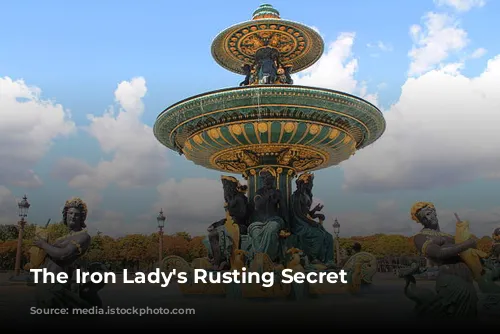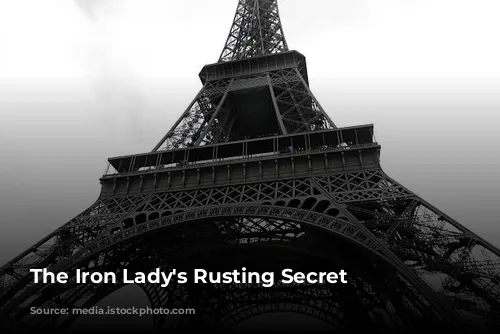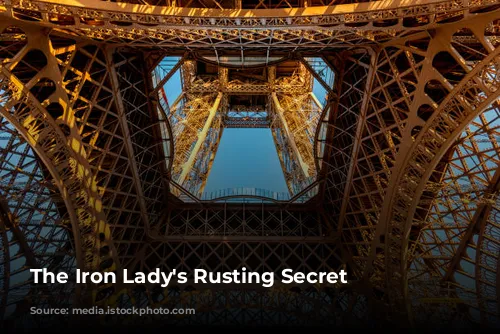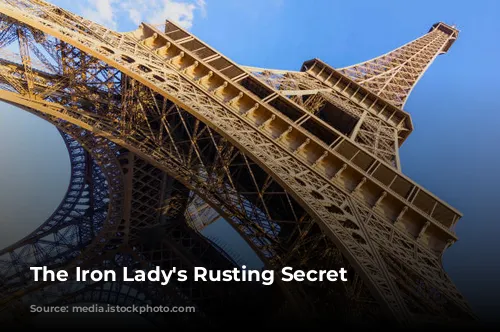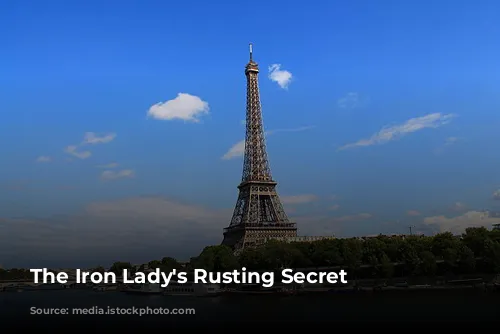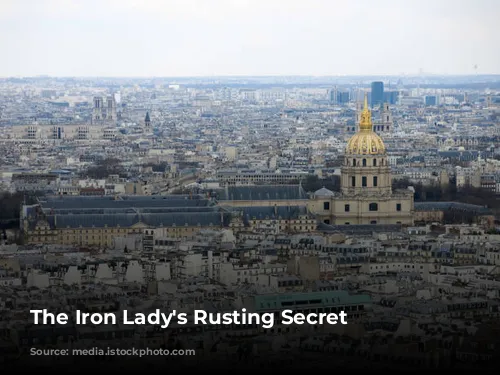Paris’s iconic Eiffel Tower, a symbol of French ingenuity and architectural prowess, is facing a silent threat – rust. Built in 1889, it was initially expected to stand for a mere 20 years before being dismantled. However, thanks to dedicated maintenance efforts, it has defied those predictions and continues to stand tall, a testament to its robust construction.

Cracks Beneath the Glamour
But recent confidential reports, leaked to the French magazine Marianne, paint a troubling picture. They reveal that the tower’s majestic facade hides a concerning reality: widespread rust and a deteriorating condition. The reports suggest a dire need for comprehensive repairs, yet the tower is currently receiving only a superficial makeover in preparation for the 2024 Olympic Games. This “cosmetic” approach is drawing criticism from experts, who see it as a short-term solution that could worsen the existing problems.
“If Gustave Eiffel visited the place he would have a heart attack,” one unnamed manager at the tower told Marianne. This grim statement encapsulates the gravity of the situation, highlighting the stark contrast between the tower’s outward appearance and its inner struggles.
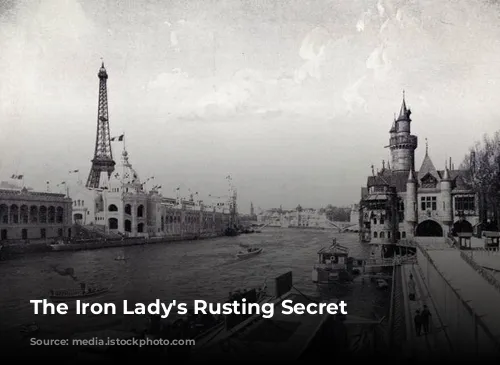
A Legacy of Rust and Neglect
The 324-meter-tall, 7,300-tonne iron structure, a marvel of 19th-century engineering, was built for the 1889 world’s fair. It boasts an estimated 2.5 million rivets and was constructed using puddle iron, a high-grade wrought iron produced through a unique process that removed carbon from pig iron. To protect it from corrosion, the tower was initially painted with four coats of red lead paint, then considered the best anti-corrosive agent.
Eiffel himself, the visionary engineer behind the tower’s design, recognized the importance of combating rust. He wrote about the crucial role of paint in protecting the structure and highlighted the need for regular maintenance. “The most important thing is to prevent the start of rust,” he emphasized, underlining the significance of proactive measures in ensuring the tower’s longevity.
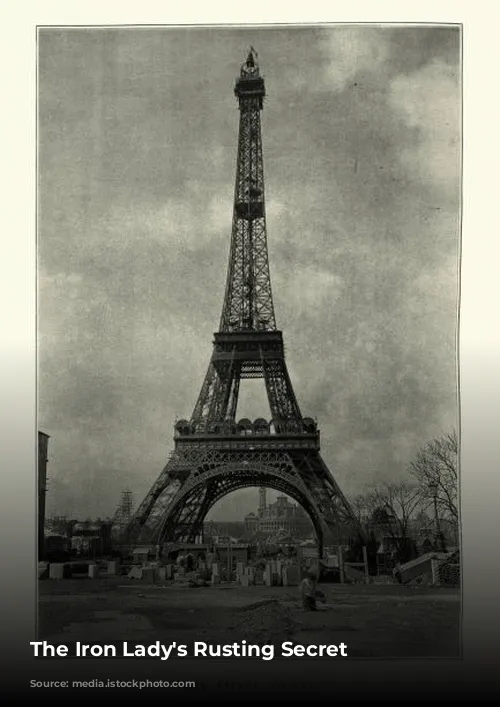
A Cosmetic Band-Aid
Despite Eiffel’s warnings, the tower’s maintenance has been criticized as inadequate, particularly in recent years. The current €60 million repaint, the 20th time the monument has been repainted, was initially planned to involve stripping and repainting a third of the tower. However, delays due to the Covid-19 pandemic and the discovery of concerning levels of lead in the old paint have significantly reduced the scope of the work, with only 5% of the tower receiving proper treatment.
Experts interviewed by Marianne have condemned this approach, deeming it a mere cosmetic facelift that will do little to address the underlying problems. They advocate for a more comprehensive solution, involving stripping the tower down to the metal, repairing any damage, and applying a fresh coat of paint. Painting over old paint, they warn, will only exacerbate the corrosion and lead to a more precarious state.
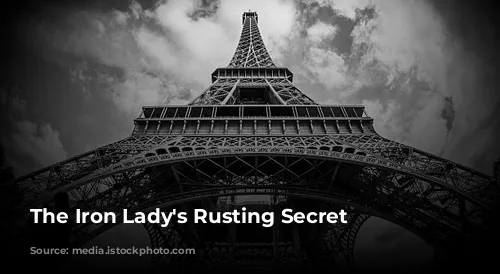
Tourist Dollars vs. Structural Integrity
Sete, the company managing the tower, which is 99% owned by the city hall, is reluctant to close the tower for an extended period due to the substantial loss of tourist revenue it would entail. The Eiffel Tower attracts approximately 6 million visitors annually, making it France’s fourth most visited cultural site after Disneyland, the Louvre, and the Palace of Versailles. Its closure during the Covid-19 pandemic resulted in a €52 million loss in income.
This emphasis on economic gains, however, has raised concerns about the tower’s long-term health. Experts argue that neglecting the tower’s structural integrity in favor of short-term financial benefits could have disastrous consequences. They point to a 2010 report that urged Sete to develop a comprehensive maintenance plan focused on testing the aging metal structure, a call that seems to have gone largely unheeded.
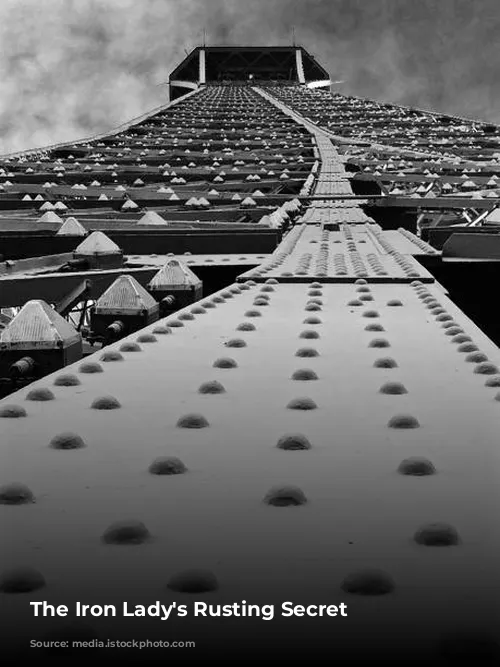
A Growing List of Concerns
Further reports, including one from Expiris, an expert paint company, in 2014, paint a grim picture of the tower’s condition. The report found cracks, rust, and poor adhesion of the newer paint, indicating that the tower’s protective layers are failing. “It cannot be envisaged to plan for a new application of a coat of paint that will do nothing but increase the risk of a total loss of adhesion in the system,” the report warned.
Bernard Giovannoni, head of Expiris and author of the 2014 report, expressed his concern, stating, “I’ve worked on the tower for several years now. In 2014 I considered there was an extreme urgency to deal with the corrosion.” He recommended stripping and repainting the entire tower to address the escalating corrosion problem.
A third report in 2016 documented 884 faults, including 68 deemed to pose a risk to the tower’s structural integrity. Each fault was photographed, numbered, and classified based on its severity.
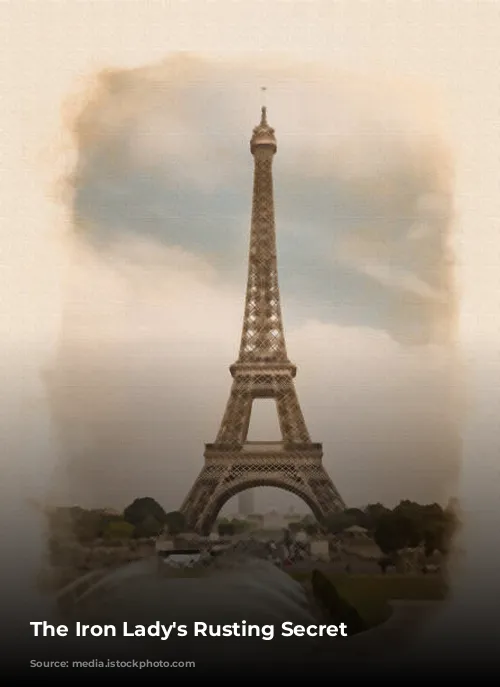
A Race Against Time
While some experts acknowledge that the original paint layers are still intact in certain areas, they warn that the current partial makeover will not address the significant lead contamination or the pervasive rust. In fact, they fear that it could worsen the tower’s condition.
“At best it will be mostly useless, but at the very worst it will make the defects in the existing layer of paint worse and result in corrosion,” one expert warned, emphasizing the potential for irreversible damage.
Despite these concerns, a more optimistic view is presented on the tower’s website by Bertrand Lemoine, an architect, engineer, and historian. He acknowledges that corrosion, caused by the oxidation of iron in contact with air and water, is a constant threat. However, he maintains that with proper repainting, the Eiffel Tower could theoretically last for centuries.
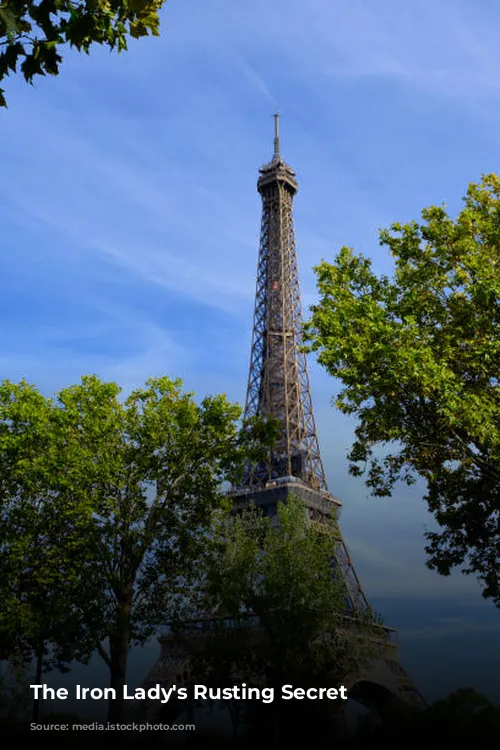
A Balancing Act: Preserving the Icon
The Eiffel Tower, a symbol of Paris and a beloved landmark, is facing a serious challenge. While its enduring beauty and engineering marvel continue to inspire awe, the underlying reality of its rusting condition demands a more proactive approach. The delicate balance between economic considerations and preserving the tower’s structural integrity requires a swift and comprehensive solution. Ignoring the warnings of experts and opting for superficial fixes could jeopardize the tower’s future, risking the loss of this iconic monument for generations to come.
